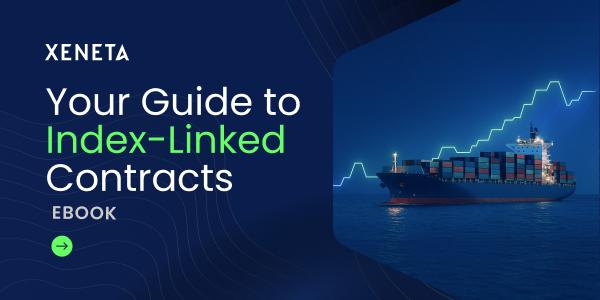Taiwanese shipping giant, Yang Ming, has earned the title of container industry's 'emission hero' for Q4 2022 based on the Xeneta and Marine Benchmark Carbon Emissions Index (CEI). Xeneta's analysis shows that Yang Ming is the only carrier to score below 100 on all CEI-covered trades operated in the final quarter of 2022. Congratulations!
The CEI equips shippers with vital insights on eco-friendly shipping and empowers them to make informed and strategic decisions. Covering 13 pivotal container shipping trade routes, the CEI scrutinizes and tabulates movements while expertly gauging emission footprints, utilizing a 2018 baseline score of 100 to accurately evaluate carriers against the trade lane average.
The Q4'22 CEI ranking revealed that Yang Ming achieved the optimal balance between vessel size, fill factor, and sailing speed. Despite this individual success, the segment as a whole presented a patchy performance, with progress in some areas undermined by lackluster results due to the sluggish market, which led to reduced fill factors and overall efficiency.
Industry Progress Towards Advancements Not a Simple Process
While the shipping industry is moving in the right direction, varied scores suggest that making advancements is far from straightforward.
The US East Coast to North Europe trade route (CEI of 108) is the only trade that has a higher CEI in Q4 2022 than in Q1 2018. Nonetheless, some trades have encountered setbacks on a quarterly basis, particularly those originating from the Far East, where the CEI scores worsened on four of the five principal trades. This can be attributed to weak market fundamentals which have decreased demand and volumes, resulting in a 4.5 percentage point drop in filling factors, without a corresponding reduction in speed (and therefore emissions), leading to reduced efficiency.
Consequently, the CEIs on these key front haul trades have increased by an average of 6%. Nevertheless, it is worth noting that all of these trades still exhibit improvements when compared to their 2018 performance, with scores advancing by between 3.4% and 15.7%. The speaker concludes that while much progress has been made, there is still much work to be done.
Far East to US East Coast Greenest
Amidst the various trade routes, the Far East to US East Coast corridor has demonstrated the most remarkable strides towards achieving eco-sustainability. In Q4 2022, this route garnered a commendable CEI of 84.3, in comparison to the baseline. The remarkable feat was accomplished by leveraging a larger vessel size, which increased by 8.5%, coupled with a notable reduction in average speed by 8.9% (a decrease of 1.5 knots) and a modest 0.4 percentage point advancement in filling factor. Although seemingly minute, the improvement in filling factor signifies a breakthrough in the efficient utilization of bigger vessels.
Eco-Footprint Improvement Goes a Long Way
Yang Ming has showcased its prowess in improving its environmental footprint. While all other carriers have scored over 100 on at least one trade route for the quarter, Yang Ming's highest score was 97.5 on the North Europe to Far East trade route. Conversely, they achieved an impressive CEI of 60.85 for the Far East to US East Coast corridor. This level of performance in an increasingly ESG-focused market can provide a real competitive edge, positioning them favorably in a challenging market. Other carriers are likely to take notice, and their response can be monitored by watching the CEI in the coming months.
Get an honest view of carrier emissions
CEI data powered by Xeneta and Marine Benchmark makes no assumptions and is independent from carriers. It's sourced from AIS tracking of actual sailings, currently covering 13 of the world’s biggest trades, with more being added in the coming months. Find out how you can factor sustainability into your carrier selection and get a demo of the CEI here.
%201.png)


-1.jpg)


